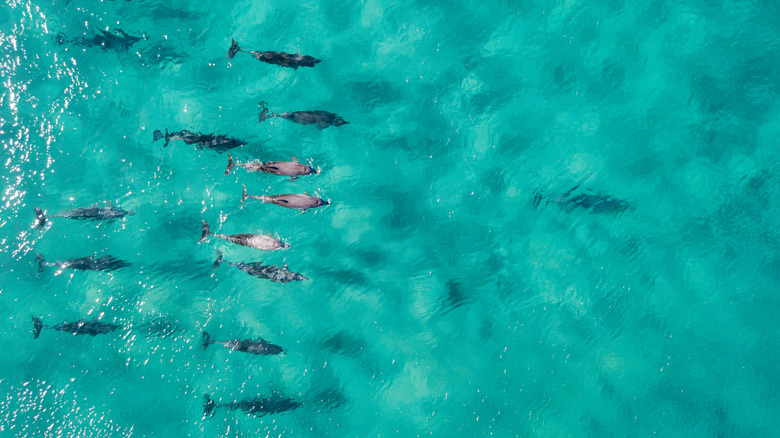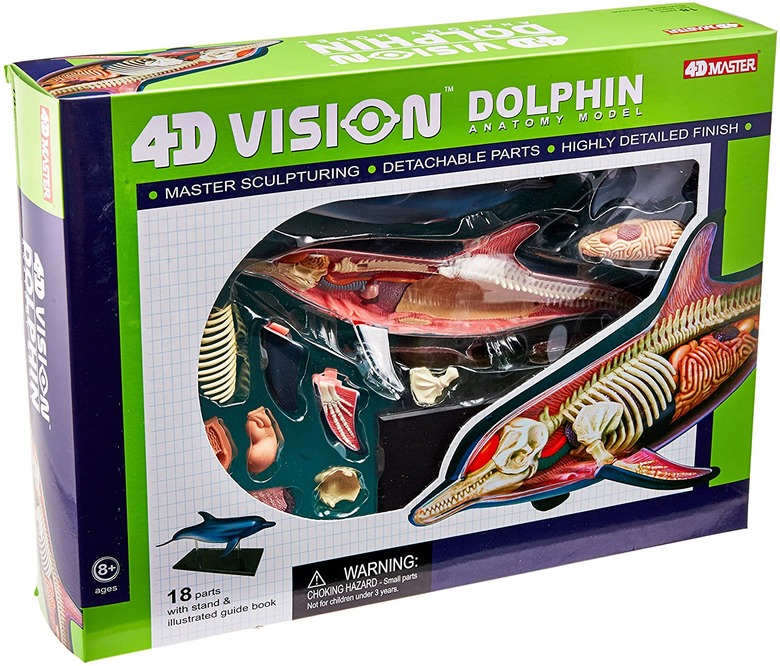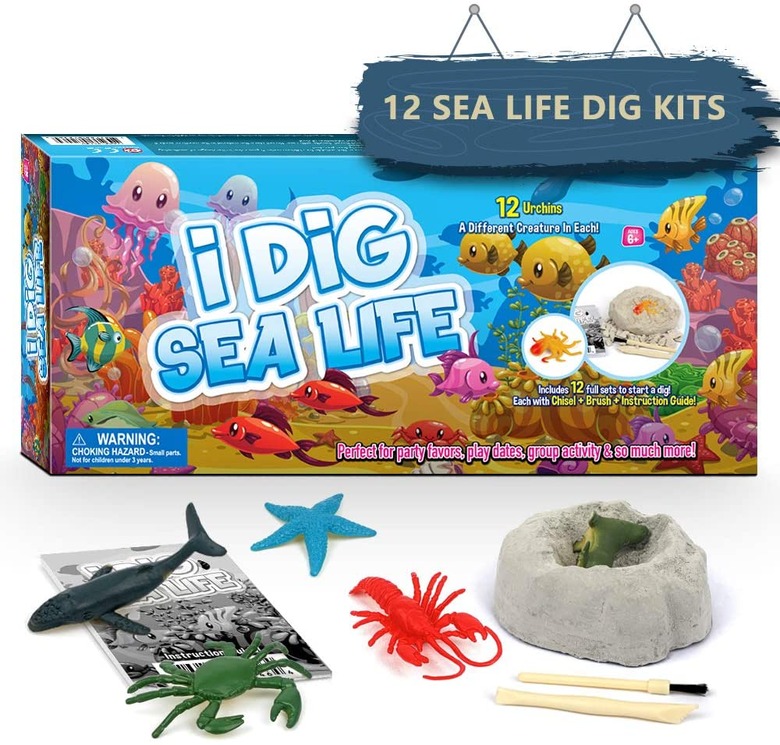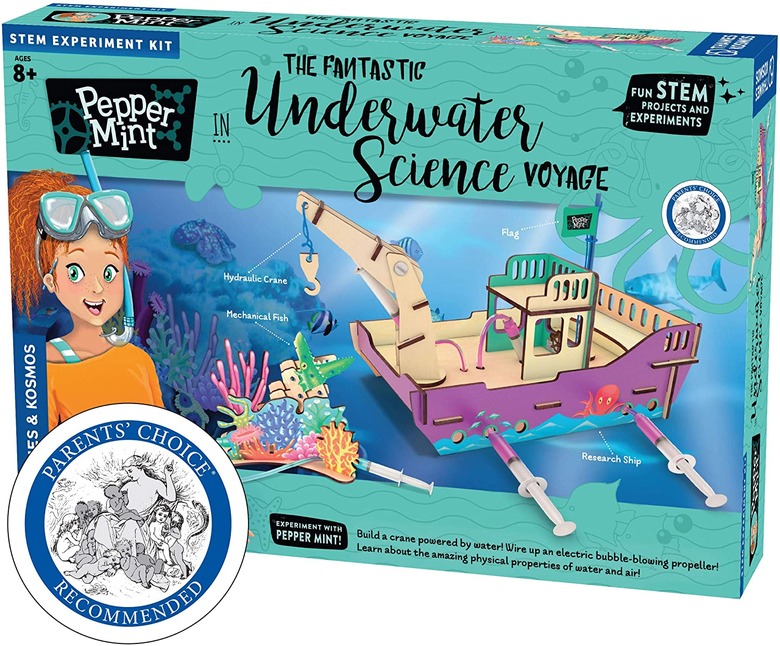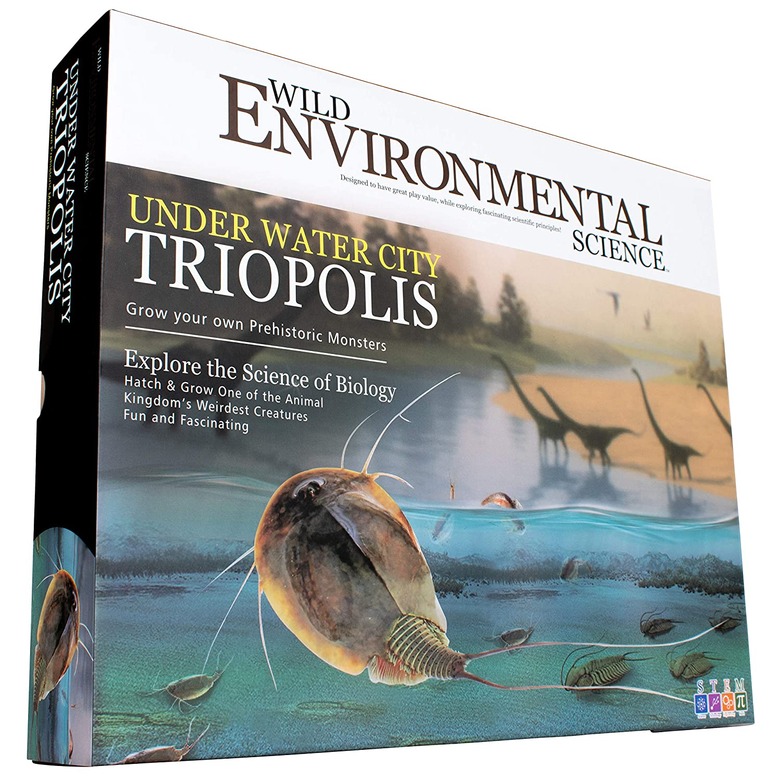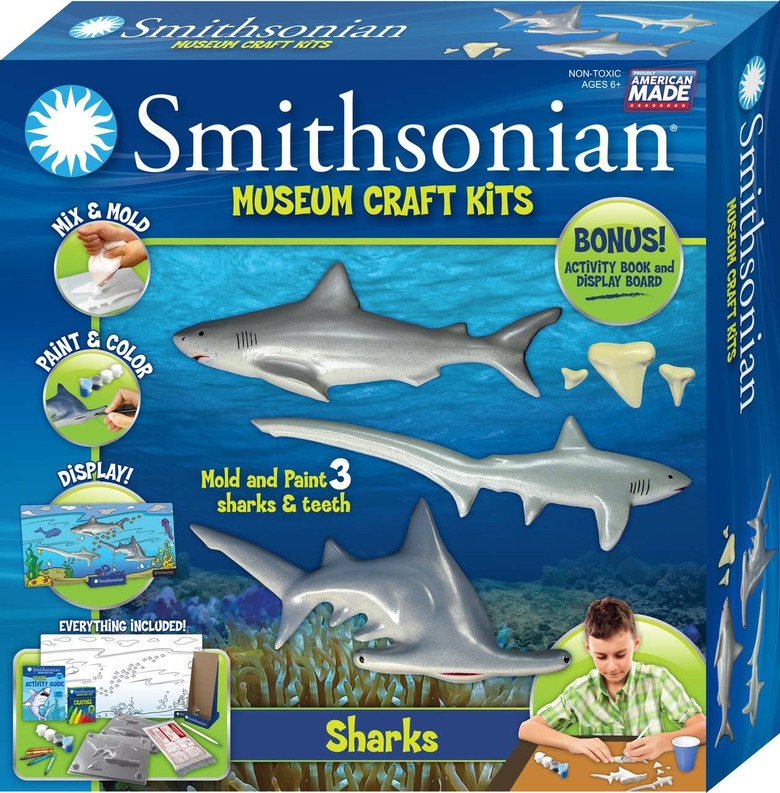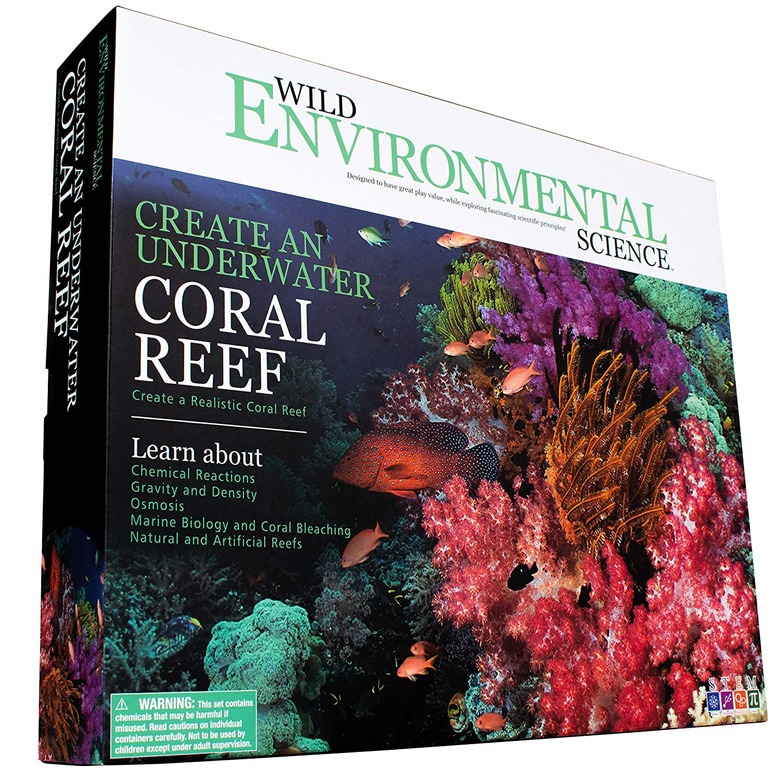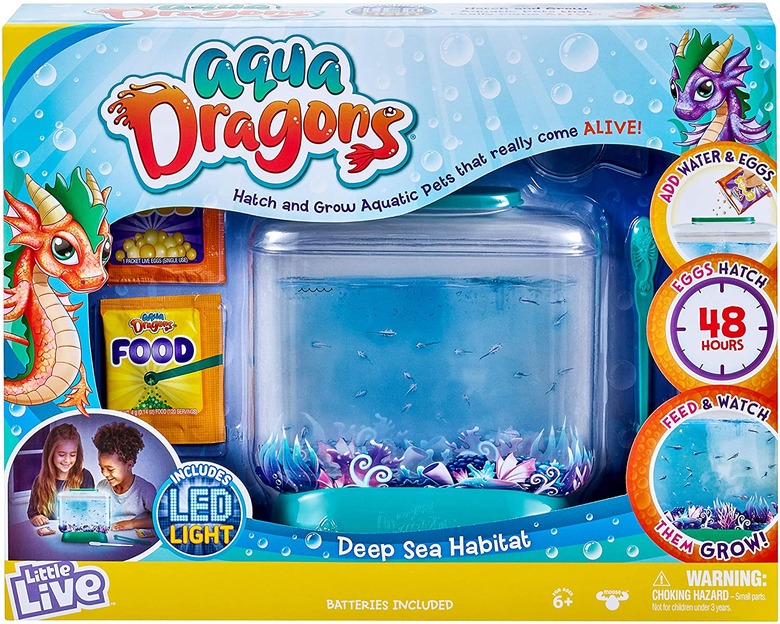Dive Into Marine Biology With These Awesome Science Kits
We may receive a commission on purchases made from links.
Sciencing may earn compensation through affiliate links in this article.
Quick quiz: What's the least explored region in the known universe? If you said "outer space," we're sorry to tell you you're wrong – it's actually the deep oceans!
Strange but true. Even though the deep ocean is closer to the earth's surface than outer space, about 95 percent of the deep ocean is still relatively unexplored. Part of that is because it's really tough to get down to the ocean floor. There's not only the immense pressure of all that water (the pressure down there is so extreme it's like being under multiple jets) but also the extreme darkness that makes it near-impossible to see.
Higher up in the oceans and seas is better understood, though, thanks to the hard work of marine biologists around the work. Marine biologists look at the marine life – the animals, plants, seashells and other organisms that live (or lived) in our oceans and seas. From helping keep dolphins and whales healthy, to learning about the earliest saltwater ecosystems, marine biologists are interested in any and all ocean life.
And while a deep dive into the ocean probably isn't in the cards for you (at least not right now!) you don't even need to leave your home to learn more about marine biology. Check out these fun marine biology labs and science kits to learn more about the creatures living in the seas and oceans.
Dolphin Anatomy Science Kit
Dolphin Anatomy Science Kit
If you're into marine animals, chances are you love dolphins. And what's not to love? They're highly social and intelligent animals, and they've even been known to save human divers from sharks. This science kit gives you an in-depth look inside dolphins. Assemble the dolphin's skeleton, muscles and other organs, like its digestive system, to learn about its physical anatomy.
**Available at Amazon:** US&ref=as_li_ss_tl'>Famemaster 4D-Vision Dolphin Anatomy Model
Marine Life Dig Kit
Marine Life Dig Kit
While many marine biologists study living marine species, others look at marine species that came before us by looking at marine fossils. Use this science kit to play marine biologist and dig for ocean animals. The kit contains 12 urchin blocks, each containing a different species, plus the tools you need to dig the "fossils" from the "sea floor."
**Available at Amazon:** US&ref=as_li_ss_tl'>I Dig Sea Life Science Kit
Underwater Voyage Science Kit
Underwater Voyage Science Kit
If you're looking for a sea adventure, this underwater voyage science kit is a great way to start. Work with Pepper Mint, a research student, to build your own ocean research vessel. Then use hydraulic pumps, and use the power of water to work the ship's crane and explore an underwater coral reef. The kit comes with a 32-page story book, which guides you through experiments to learn more about the mysterious Bermuda Triangle, a triangular section of the North Atlantic Ocean where boats and planes allegedly disappeared. (Most experts dismiss any mystery associated with the Triangle, however).
**Available at Amazon:** US&ref=as_li_ss_tl'>The Fantastic Underwater Science Voyage Experiment Kit
Triopolis Science Kit
Triopolis Science Kit
Triops are one of nature's weirdest creatures. They're prehistoric crustaceans – an ancient species related to crabs and shrimp – that both lived in the age of the dinosaurs and survived beyond their extinction. Build your own underwater triop farm with this live marine biology science kit. It comes with triops eggs, food, sand and thermometer to set up a safe environment for your triops, plus a magnifying glass to observe them up close.
**Available at Amazon:** US&ref=as_li_ss_tl'>Under Water City Triopolis Science Kit
Sharks Museum Model Science Kit
Like triops, sharks are ancient marine creatures. They first evolved about 450 million years ago – before dinosaurs or trees were even a thing – and have survived five mass extinctions. Crazy, right? This science kit helps you mold and paint three shark species: the long-tailed tropical thresher shark, distinctive hammerhead shark and, of course, the infamous great white shark. It also has a backdrop you can color to create a 3D diorama, which is perfect for grade school science fairs.
**Available at Amazon:** US&ref=as_li_ss_tl'>Smithsonian Sharks Museum Model Cast Kit
Create Your Own Coral Reef
Create Your Own Coral Reef
Coral reefs are a key issue in marine biology right now. As fragile marine ecosystems, coral reefs are particularly affected by climate change. High levels of carbon dioxide change the pH of the water – a phenomenon called ocean acidification – which weakens coral, while rising temperatures can kill the microbes that coral need to survive. Appreciate coral's natural beauty with this coral reef science kit, which allows you to grow chemical coral safely at home. You can also decorate your reef with shipwrecks and marine animals for a fun marine biology decoration.
**Available at Amazon:** US&ref=as_li_ss_tl'>Wild Environmental Science – Create an Underwater Coral Reef Science Kit
Deep Sea Aqua Dragons Science Kit
Deep Sea Aqua Dragons Science Kit
The creatures of the deep sea are not yet well understood – but you can use this kit to create a deep sea aqua dragon farm at home. "Aqua dragons" are actually brine shrimp, a tiny relative of the shrimp we eat, and they're easy to grow at home. This kit comes with brine shrimp eggs and a tank for them to live in. Just add the eggs to the water, and your "dragons" will hatch in 2 days. Easy!
**Available at Amazon:** US&ref=as_li_ss_tl'>Little Live Aqua Dragons – Deep Sea Habitat Hatch and Grow Pets
Cite This Article
MLA
Tremblay, Sylvie. "Dive Into Marine Biology With These Awesome Science Kits" sciencing.com, https://www.sciencing.com/marine-biology-science-kits-13764452/. 18 May 2021.
APA
Tremblay, Sylvie. (2021, May 18). Dive Into Marine Biology With These Awesome Science Kits. sciencing.com. Retrieved from https://www.sciencing.com/marine-biology-science-kits-13764452/
Chicago
Tremblay, Sylvie. Dive Into Marine Biology With These Awesome Science Kits last modified August 30, 2022. https://www.sciencing.com/marine-biology-science-kits-13764452/
